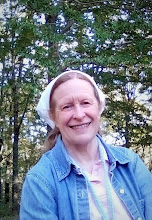Are you sitting down?
One of my classmates, upon thinking he might have found a specimen of that for which we sought, and finding himself not within easy hailing distance of the professor, pulled. the. plant. up. by. the. roots. and. took. it. to. her. to. see. if. it. was. the. endangered. one.
You may file that bit of information under "how to give an environmentally-hyperconscious college professor a case of the vapors."
That blast from the past was prompted by the story of the Papua New Guinea tribesman who recently reported eating a creature that some folks thought had gone extinct. Just to make it more interesting, the creature had been named (by outsiders) for the naturalist Sir David Attenborough. From "I didn’t know creature was rare, says tribesman who liked it well done," by Lewis Smith (TimesOnline, July 16, 2007):
Figuratively speaking, I am laughing and crying at the same time.The expedition to find the echidna was part of the Zoological Society of London’s Edge programme which aims to find, learn about and help to protect some of the world’s most endangered animals. It was led by Dr Jonathan Baillie of the ZSL, who said the discovery that villagers in the Cyclops Mountains of Papua New Guinea were familiar with the echidna was immensely reasuring, even if they did eat them occasionally.
Now it has been established that they are alive, he is planning to return to set up camera traps in the hope of photographing one of the shy, nocturnal animals. He said that the conversations with villagers and the nose impressions in the ground indicated that the species had a much wider range than previously believed.
The original specimen was discovered at 1,600 metres up a mountain but it is now known that the animal can live much lower down, at 160 metres. They are estimated to live in an area of 100 square kilometres.
Tribesmen in the Cyclops Mountains provided scientists with information about the echidnas, for which the local name is Payangko. The animals are well-enough known to have a place in tribal culture. Peace is said to return to villages where families suffer long-standing rivalries if one of the protagonists catches an echidna and shares its meat with a rival.
Attenborough’s longbeaked echidna, Zaglossus attenboroughi, was first found in 1961 and the captured specimen was sent to the National Museum of Natural History in Leiden in the Netherlands for storage.
However, it was only in 1998 when the specimen was analysed by Professor Tim Flannery and Professor Colin Groves that it was realised the animal represented an unrecognised species.
Dr Baillie added: “In addition to Attenborough’s echidna, we found an astonishingly vast array of biodiversity, some of which is highly unlikely to be known to science.”
Read the whole article.
hat tip: The Common Room: The Echidna; Tastes Great!

1 comment:
Great story. I think I'll be linking.
Post a Comment